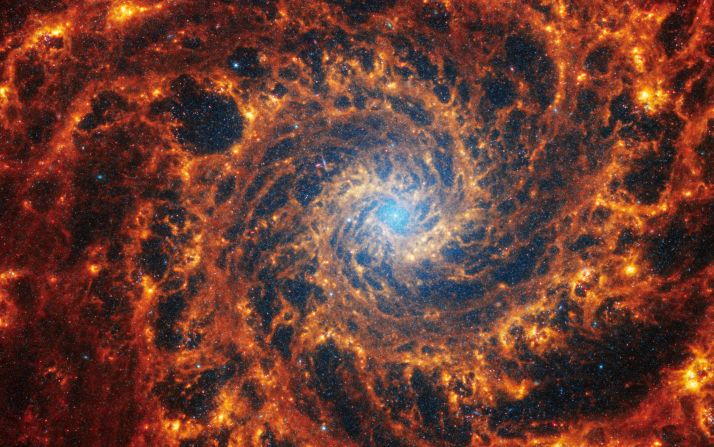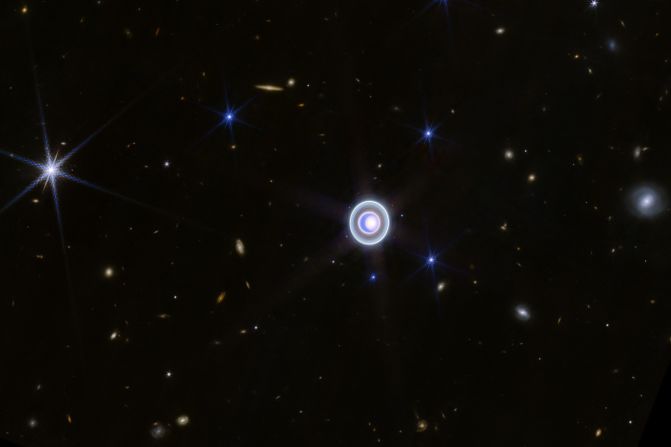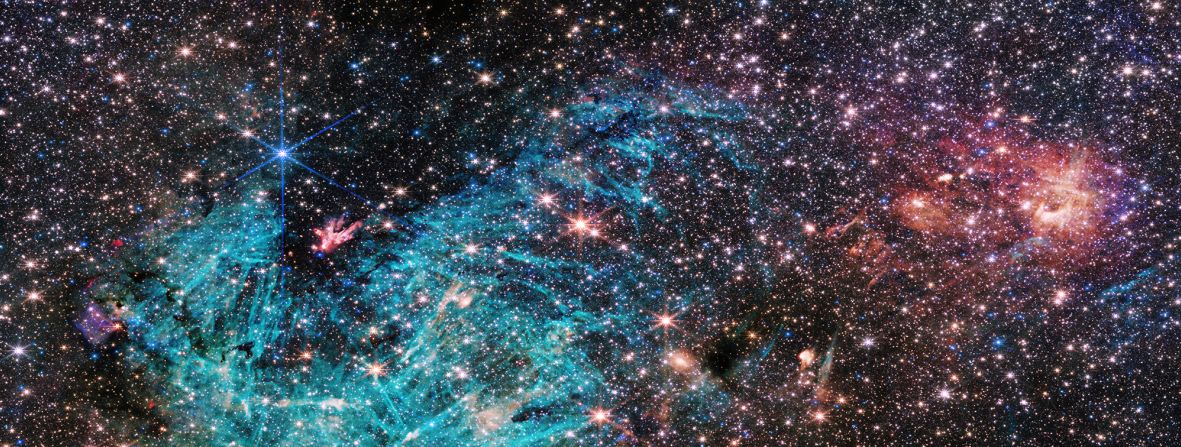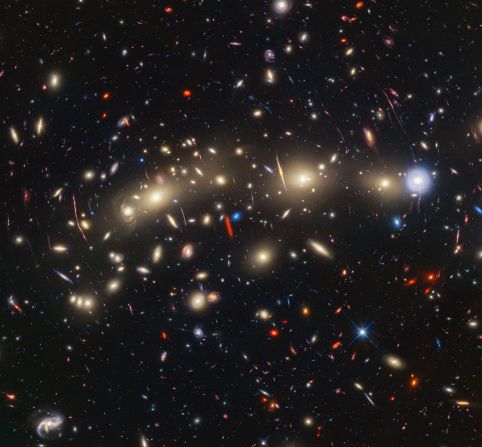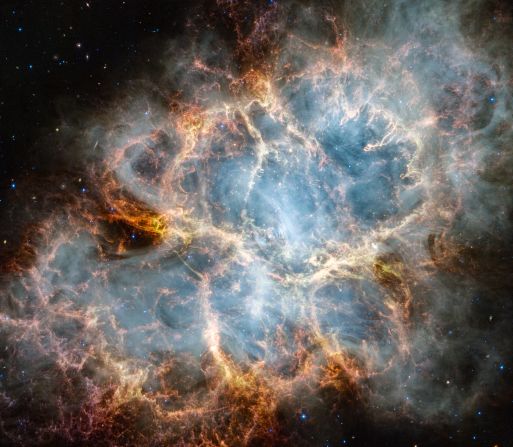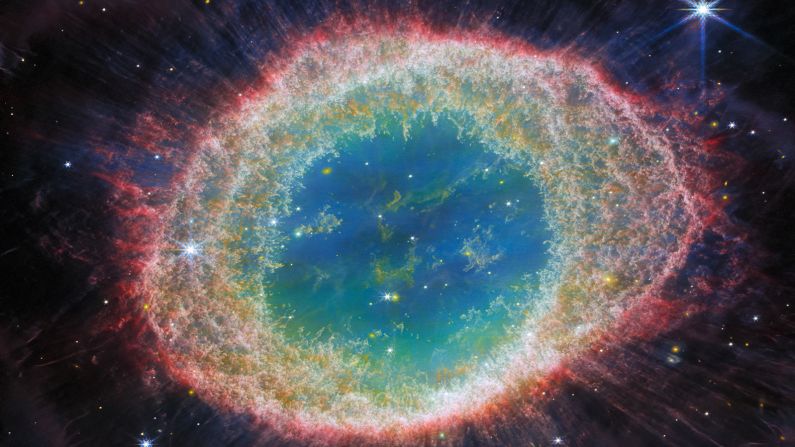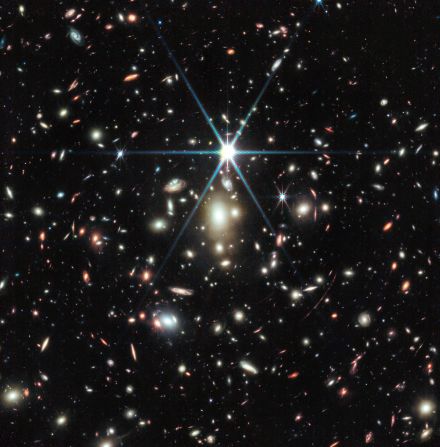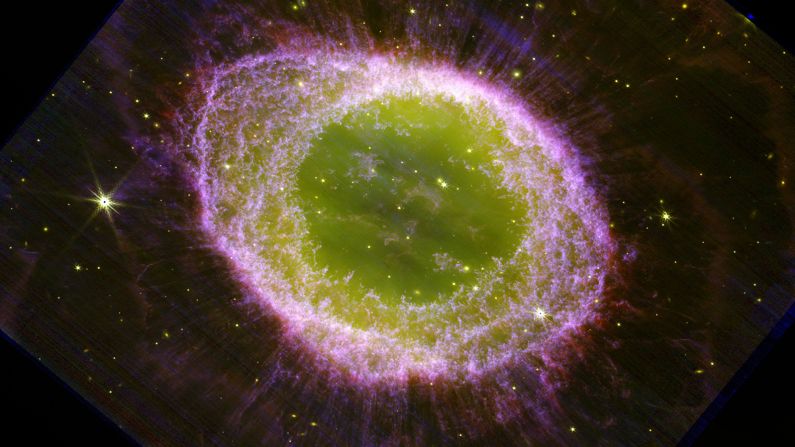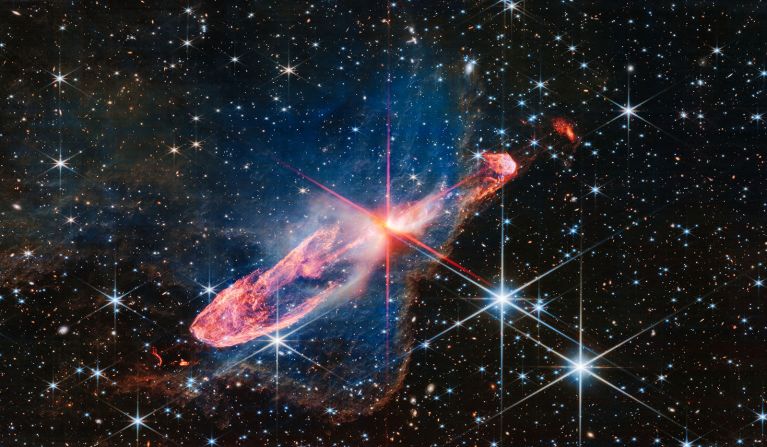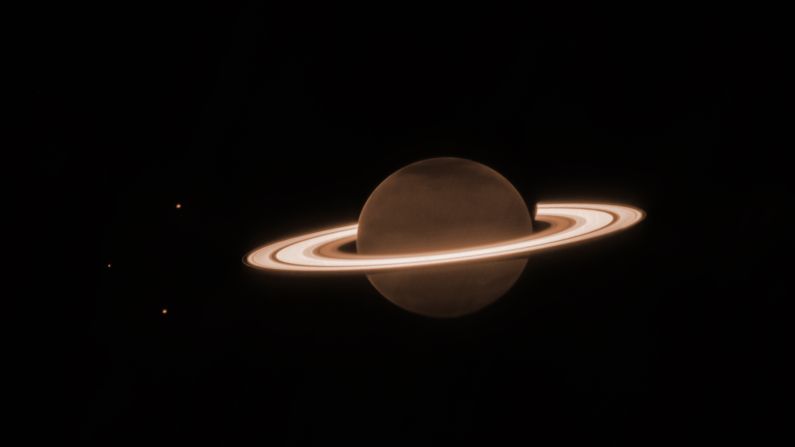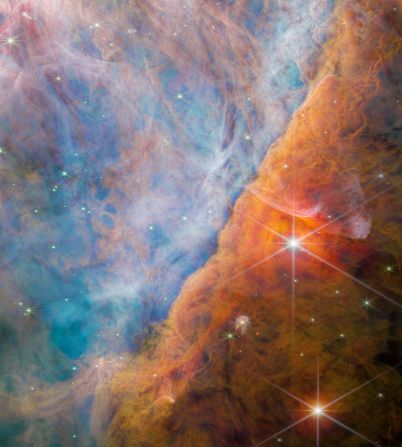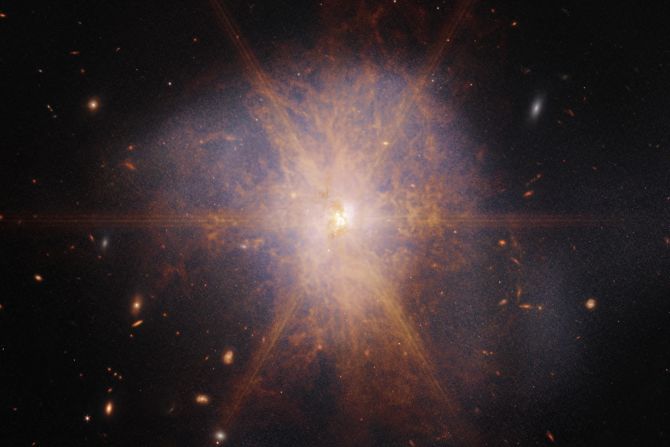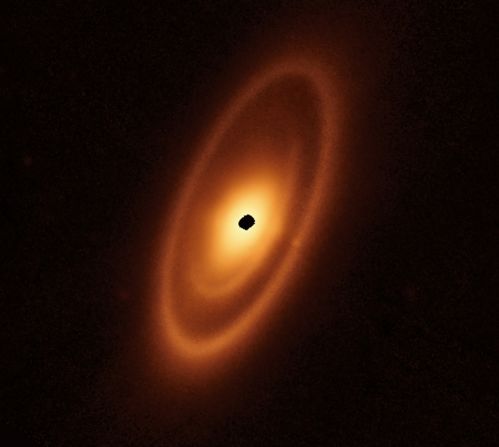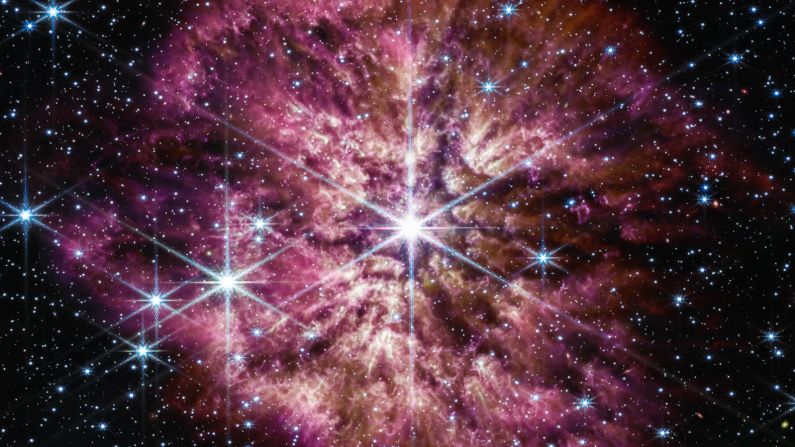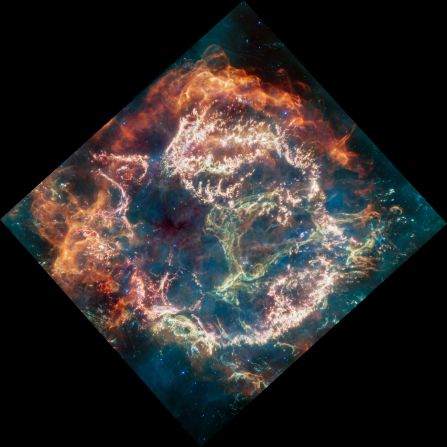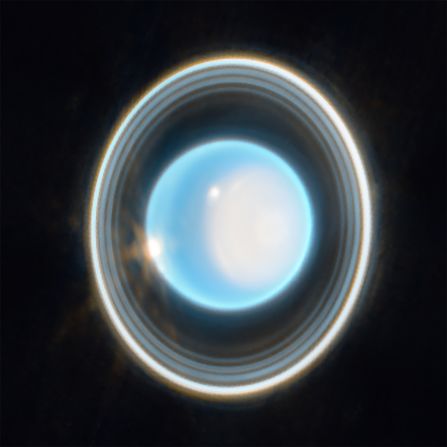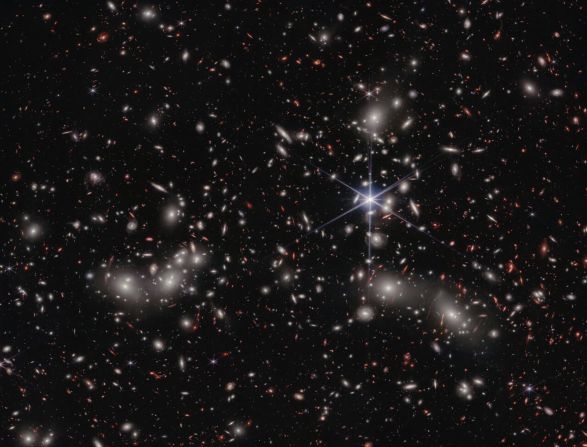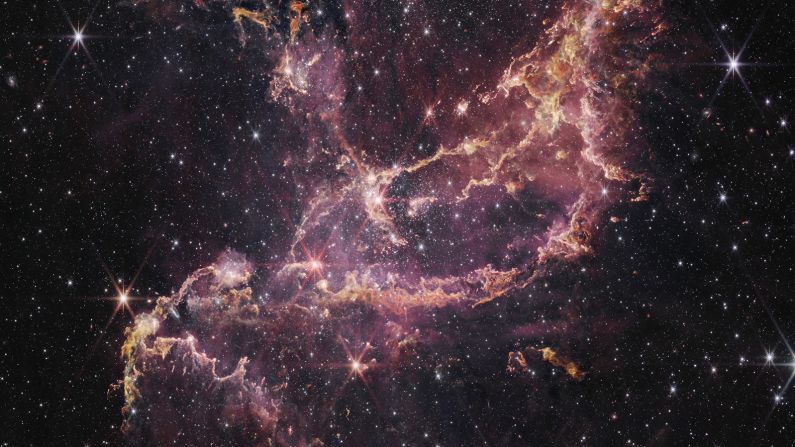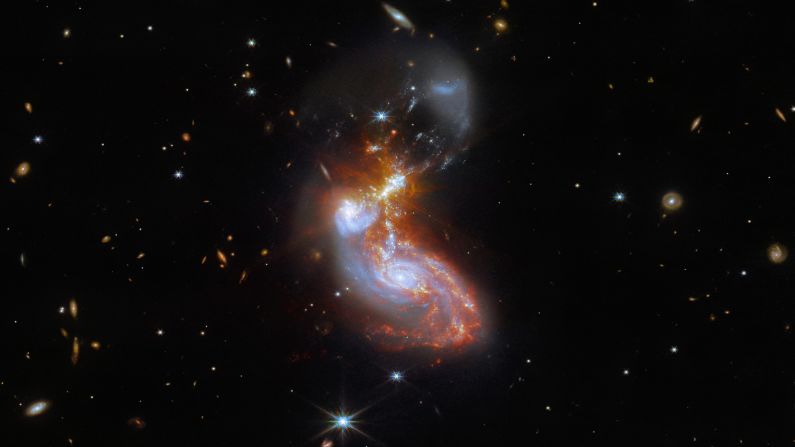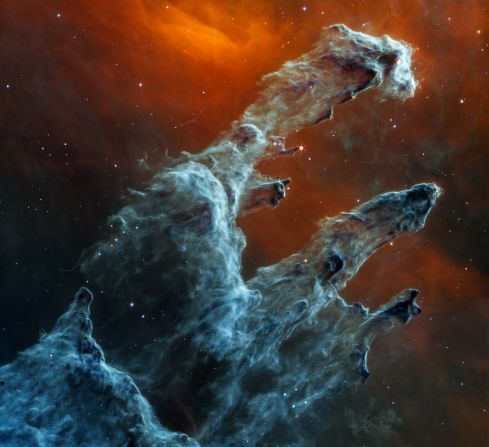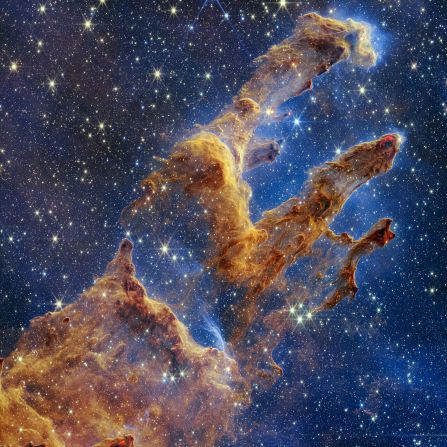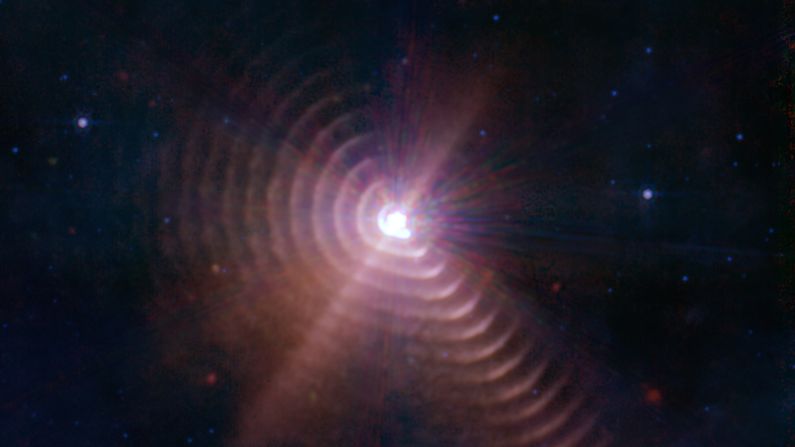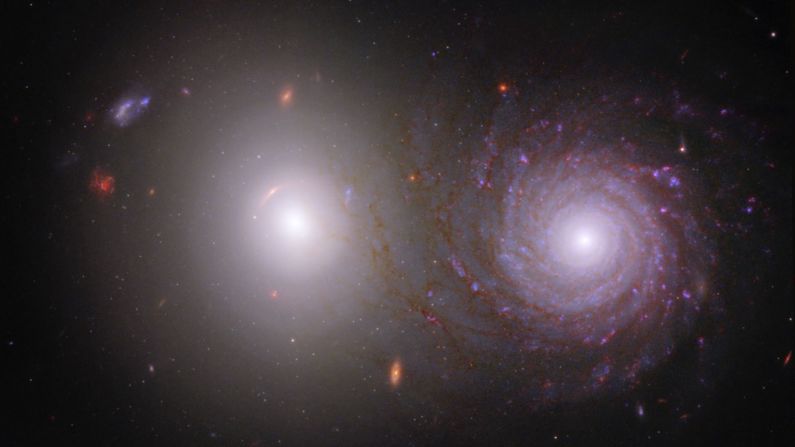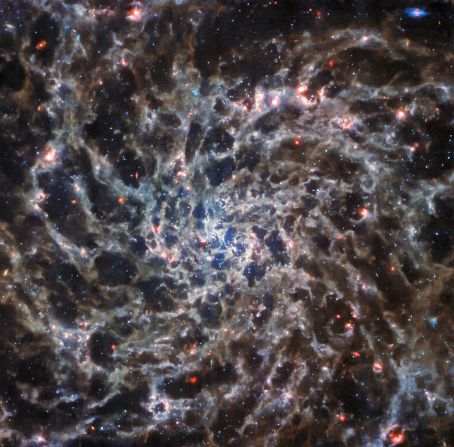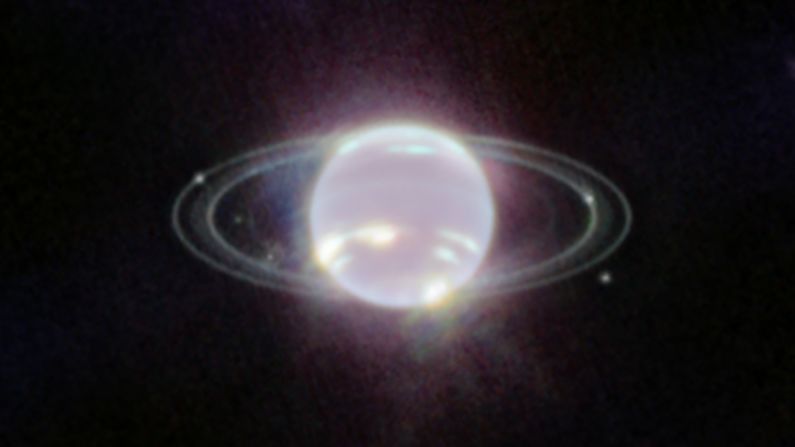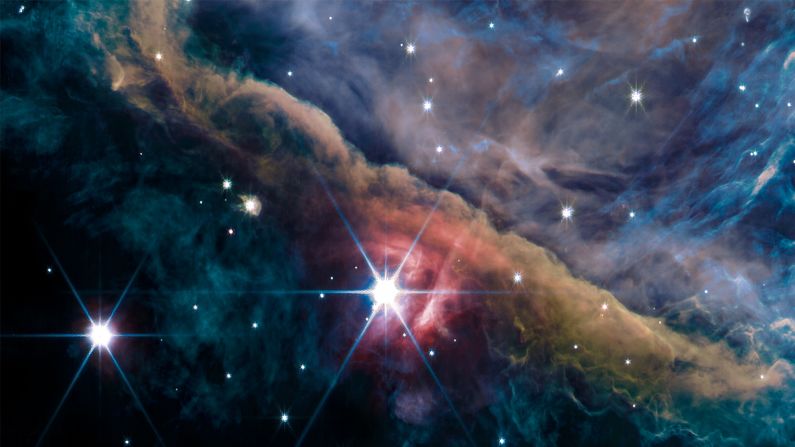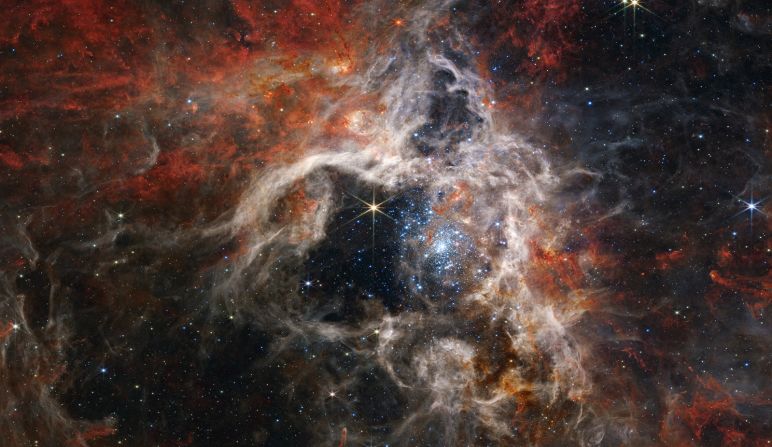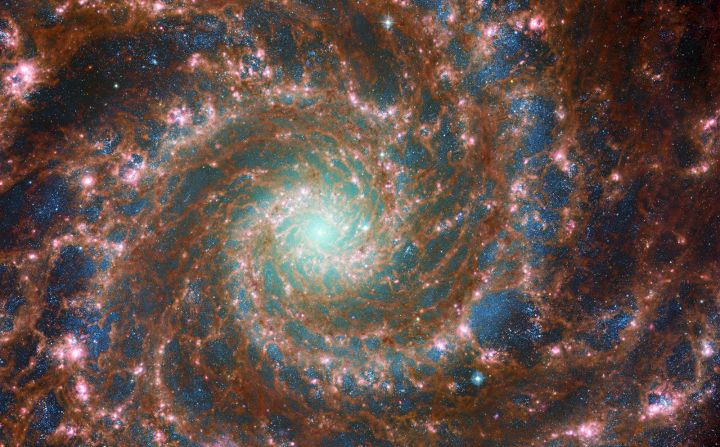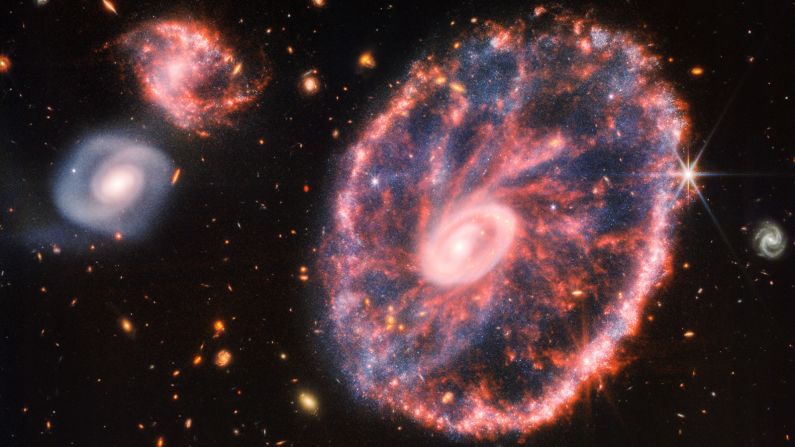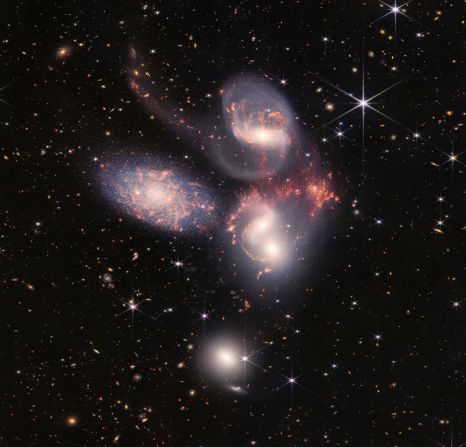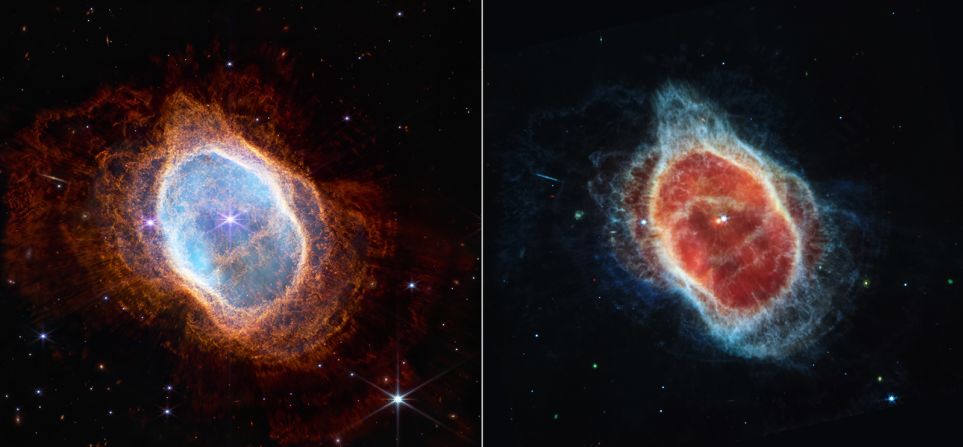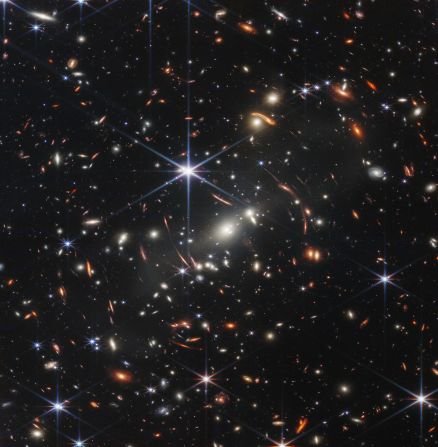Sign up for CNN’s Wonder Theory science newsletter. Explore the universe with news on fascinating discoveries, scientific advancements and more.
A brilliant starburst feature shines in the latest image taken by the James Webb Space Telescope.
The space observatory captured a bright burst of star formation triggered by two spiral galaxies crashing into one another.
The colliding galaxies, known collectively as Arp 220, generated an infrared glow that contains the light of more than 1 trillion suns. For comparison, the Milky Way galaxy has a luminosity that is the equivalent of about 10 billion suns.
The scintillating light show from the ultra-luminous infrared galaxy is the spiked starburst feature at the center of the new Webb image, which was released on Monday.
The telescope’s Near-Infrared Camera and Mid-Infrared Instrument captured the composite image.
Arp 220 is located 250 million light-years away in the Serpens constellation, and it’s the brightest of the three galactic mergers closest to Earth.
These two galaxies began colliding about 700 million years ago, and as the gas and dust combined, a tremendous flare of star birth began.
There are around 200 massive star clusters contained in a dusty region that stretches 5,000 light-years across, which is about 5% of the Milky Way’s diameter. Yet there is enough gas in this small region, astronomically speaking, to replace all of the gas in the entire Milky Way.
Previous observations of this star-packed region from other telescopes have observed different features. Radio telescopes saw 100 supernova remnants within an area of less than 500 light-years, while the Hubble Space Telescope documented the cores of the two original galaxies existing 1,200 light-years apart.
Each galactic core has a rotating star-forming ring that releases the bright infrared light that the powerful Webb telescope is capable of viewing in great detail. This brilliant luminosity creates the diffraction spikes, or starburst feature witnessed by Webb.
The new Webb image also reveals tails, or material streaming away from the galaxies due to gravity, in blue, to indicate activity as the galaxies continue to collide. Meanwhile, reddish-orange streams and filaments of organic material can be seen across the merging galaxies.





